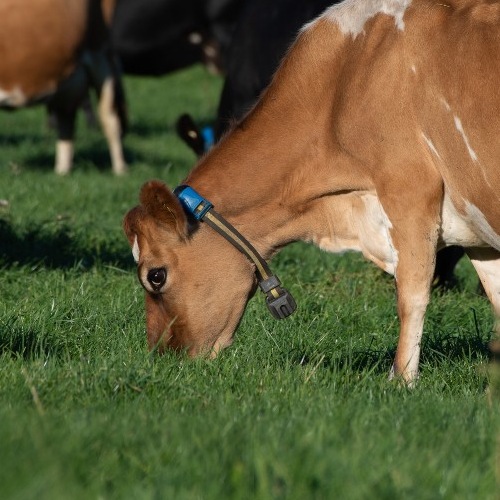Facial eczema causes pain and stress to cows, a significant drop in production and can force you to dry off up to 60 days early. It can be hard to detect, as by the time you see the physical symptoms it's too late and subclinical damage could already be impacting your animals.
Facial eczema
ZincCheck
There is no cure for facial eczema - prevention is the only way of protecting animals. This is why we launched ZincCheck, a milk sample test that allows Fonterra suppliers to easily and regularly test their Zinc levels to understand if their dosing is effective.
Heat stress
Cows experience heat stress at temperatures below much 20°C, leading to discomfort and lower milk yields. Providing shade and ample drinking water is the first line of defence against heat stress; managing key mineral intake is also crucial.
Facial Eczema (FE)
Facial eczema is one of New Zealand's most challenging ruminant animal diseases. Most prevalent in the North Island, and starting to appear in the upper South Island, facial eczema is a liver disease caused when cattle ingest a toxin (sporidesmin) produced by the spores of a fungus commonly found in the dead litter at the base of pasture in warm moist conditions.
FE causes pain and stress to cows, a significant drop in production and can force you to dry off up to 60 days early. It can be hard to detect, as by the time you see the physical symptoms it's too late and subclinical damage could already be impacting your animals. Early treatment with Zinc is the best defence against facial eczema, and if you're a Fonterra supplier, you can check how effective your dosing is with ZincCheck.
Farm Source Seasonal Focus podcast
Welcome to Farm Source Seasonal Focus, a podcast created to share knowledge and advice on the season ahead. Join us as vets, agronomists, vendor representatives, our team of Technical Sales Representatives (TSRs) and Sustainable Dairy Advisors (SDAs), and fellow farmers share their insights.
In this video, watch Technical Sales Representative Nick Anderson explain the different application methods available to treat your herd early with Zinc.
Check out the rest of the series on YouTube and Spotify.

FONTERRA SUPPLIER EXCLUSIVE
ZincCheck by Farm Source
There is no cure for facial eczema - prevention is the only way of protecting animals. This is why we launched ZincCheck, a milk sample test that checks your herd's zinc levels over multiple days. This helps to see how effective your dosing is and assess the risk to your herd.
Book your first free test now!*
Limited supply.
ANIMAL HEALTH
Heat stress
Cows begin to experience heat stress at much lower temperatures than humans, preferring temperatures below 20°C. The earliest indicator of heat stress is increased breathing rate. To check breathing rate, ideally observe ten cows on a warm summer afternoon. A high-producing black cow will be most at risk. Time each cow for 10 seconds and watch closely. If they take 7-10 breaths, they are starting to struggle. More than 10 breaths puts them at high risk of heat stress.
Access to shade and plenty of drinking water are the best line of defence, but cooling with water and changes to milking and feeding routine can also help when shade isn’t enough.

AGRITECH
SenseHub® Dairy Monitoring Collars
SenseHub® Dairy with Allflex® Collars is a flexible animal monitoring solution that gives you a sense of every individual cow, all in the palm of your hand.
- Monitor breathing patterns and know if breathing is heavy, which may indicate overheating
- Monitor rumination and movement patterns
- Identify sub-clinical health issues before visual symptoms appear
- Identify reproductive status
“Good information leads to good decisions, and the data has provided us with great information. We’re able to monitor our cows’ breathing, rumination, and movement patterns during the day and pre-empt any issues cropping up. If we notice the cows’ breathing is heavy then we’re able to quickly move in and change things. It’s definitely made an impact on our bottom-line as well with animal health spending down over the past year.”
Kane Brisco, Taranaki Farmer